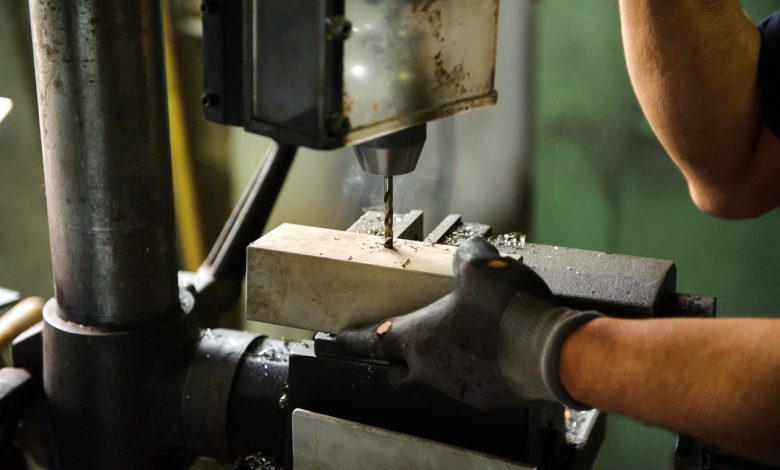Aluminum Forming Process: Explained

Aluminum, before actually being used as a material for several applications, has gone through a series of processes that make it more versatile and very flexible to utilize. And given that it has a number of desirable properties, including how strong its electrical and thermal conductivity is, lightweightness, and high malleability, it is widely used by many, as a staple material in certain products. There are aluminum forming processes that are done to successfully use them for a variety of applications in numerous industries. May it be in the construction industry, industrial, retail, transportation, and many others, particularly in modern manufacturing as well. They all depend on the ways on how the material is formed into an actual finished product.
Creating and forming aluminum has to go through different processes, to enhance its properties as well. Pure aluminum, for instance. It has to be alloyed in order to increase its strength. Common alloys that include the 6000 series, are formed with elements like magnesium silicide, as a means of creating a corrosion-resistant, strong, and machinable material.
Common Aluminum Forming Processes
Four of the most common aluminum forming processes include aluminum extrusion, casting, and rolling, which makes use of different techniques conveying unique properties to the aluminum. They have their own benefits and detriments as well, which each suits to certain applications, and for different types of metal. And since aluminum forming processes are done to establish the aluminum into a specific shape, the techniques done can include a variety of physical and chemical approaches to give aluminum different physical properties. Thus, with these processes, designers and manufacturers will be able to utilize them for a variety of parts and applications.
These aluminum forming techniques have different approaches as to how they will fabricate the aluminum into a useful product or material. With this, the physical properties of the outcome of these techniques vary significantly from one process to the next. This makes it certainly important to understand the differences between these processes, as some of their components will be the primary driver in choosing the appropriate process. For instance, there are certain parts that can only be made through a specific technique. This specific one provides the desired characteristics like the strength or shape of the material, which makes it the only ideal process for making that certain part.
These reasons make the understanding processes of the various aluminum forming techniques important, particularly to know the right one that forms the specific aluminum part you require to have.
Aluminum Extrusion
One of the most common aluminum forming processes is the aluminum extrusion. It is a widely used method in creating a fixed cross-sectional profile. The aluminum alloy ingot in this process is heated to 350-500°C before being driven and pushed into the die by a hydraulic press. It has the desired final cross-section form. Then, the material is then cooled and stretched to relieve any stress.
If this method is compared to a real-life instance, it can be equated into the way children play with play-dough. They create a long strand of the dough by pushing it through a plastic die. Moreover, it can also be linked in the way one pushes toothpaste out of a tube with a circular shape.
The result of this aluminum forming process will be the cross-section of the die. They can have a variety of forms — solid, hollow, and semi-hollow shapes. Additionally, the resulting profiles can be cut at any length. This makes the extrusion the ideal measure in creating complex cross-sections at a relatively low production cost. Moreover, the outcome of the extrusion processes typically have a consistently smooth surface finish. It is perfect for further processing in enhancing their appearance and preventing corrosion.
Aluminum Casting
Another type of aluminum forming process would be the casting method. It is actually a process that is ideal for forming aluminum into very complex shapes. This method involves the melting of aluminum alloys, then injects the formed liquid metal into a mold. The liquid metal that has been formed fills the empty cavity completely when poured. Then, it solidifies to produce an exact aluminum replica of the mold’s internal shape. Dies and permanent molds, clay molds, and sand molds are some of the mold types that can be used for casting.
The parts which are produced through this aluminum forming method often require minimal additional machining. And if you use steel dies, you can repeat the process several times before needing to replace the die.
Another advantage of using the aluminum casting method would be using it no matter how complex the parts you require them to produce. This complexity is incomparable to other aluminum forming processes. It is because it also gives you options for different textures with almost no size limitations. It can use a large range of alloys and custom alloys, and is best suited for smaller runs as well.
Rolling Aluminum
Being a commonly used method for beverage cans and foil that can be rolled as thin as 0.006 mm, the process of rolling aluminum can yield even more complex profiles with intricate bending. The aluminum alloy in this method is casted into large rectangular beams which are up to 9 meters in length. Then, the malleable aluminum beams are rolled into thin sheets. It also involves the process of passing slabs or billets of aluminum alloys through different sets of rolls. This will then be a process reducing their thickness. This is repeated until the aluminum reaches its ultimate shape. Then, it results in a component that can be classified as a plate, sheet, or foil depending on thickness. In short, the rolling process involves continually feeding a long strip of metal through the drum rollers. As a means of attaining a desired cross-section.
The aluminum plates, sheets, and foils that are made through the aluminum rolling technique tend to have great versatility. They can then be processed further by bending, forming, or machining to produce the required item or parts. As a result, it can have tight, repeatable tolerances, which is capable of forming high-strength metals in the process.
Key Takeaway
Because of aluminum’s strength, durability, and lightweight properties, this material can go through a variety of aluminum forming processes to produce the required outcome or product. It has been used extensively by most industries, which makes aluminum a very versatile material as well. Each forming technique has distinct advantages and disadvantages. They are suited for the various types and applications you opt to form. Thus, the most ideal forming process would certainly be the one that can provide the best characteristics according to where you actually need them.





